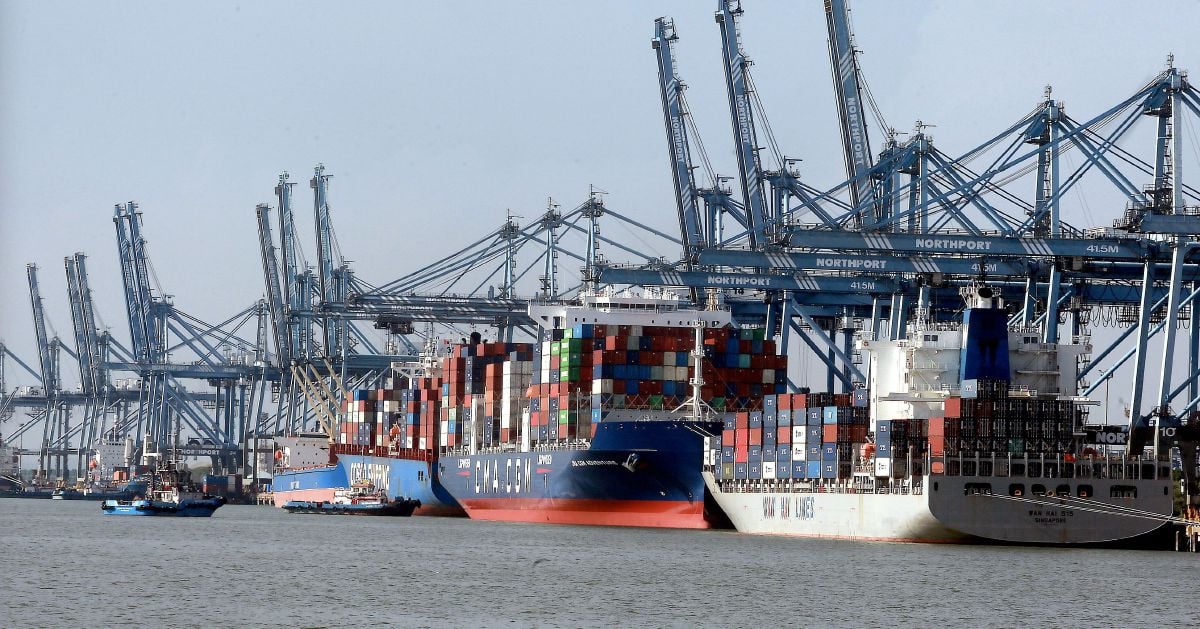KUALA LUMPUR: Malaysia’s external trade cooled off in August but exports expanded despite the US tariff adjustment that kicked in during the month.
The August performance had exceeded expectations, partly on frontloading activities, economists said, adding that electrical and electronics (E&E) demand remains resilient, driven by rising adoption of AI, 5G, automation and electric vehicles.
They, however, cautioned that overall trade flows should stay volatile as global supply chains recalibrate and commodity exports remain sensitive to global shifts.
IPP Wealth Managers’ investment strategy and country economist Mohd Sedek Jantan said while August exports showed weakness, they remained above historical medians, reflecting resilience despite global headwinds.
Investment, Trade and Industry Ministry said the country’s trade eased slightly by 1.9 per cent year-on-year to RM247.07 billion last month amid shifting global trade conditions.
Exports, however, rose for the second consecutive month, expanding 1.9 per cent to RM131.6 billion.
Imports fell 5.9 per cent to RM115.47 billion, giving a trade surplus of RM16.13 billion, the 64th consecutive month of surplus since May 2020 and a 153.8 per cent jump from August 2024.
The ministry said export growth in August this year was driven by strong performances in both manufactured and agriculture goods.
“Agriculture exports rebounded from the decline in July, while the main contributors were electrical and electronic products, machinery, equipment and parts, optical and scientific equipment, and palm oil and palm oil-based products.
“Notably, exports of optical and scientific equipment recorded their highest value to date,” the ministry said today.
For the cumulative January-August, Malaysia recorded its highest-ever trade values.
Total trade rose 3.8 per cent year-on-year to RM1.98 trillion, while exports grew 3.9 per cent to RM1.03 trillion, surpassing the RM1 trillion mark a month earlier than in 2024.
Imports expanded 3.6 per cent to RM945.62 billion, generating a trade surplus of RM86.07 billion.
Mohd Sedek noted that on a month-on-month basis, the country’s exports fell six per cent in August, mainly due to a 12.4 per cent decline in eE&E shipments.
“Given Malaysia’s high trade-to-gross domestic product (GDP) ratio, we believe that the August contraction could weigh on third quarter of 2025 (3Q25) trade performance,” he told Business Times.
“Even so, we maintain our in-house forecast of 4.5 per cent GDP growth for 3Q25, while noting that prolonged external weakness, particularly in E&E exports and US-bound trade, could pose downside risks,” he added.
Nusantara Academy for Strategic Research senior fellow Dr Azmi Hassan said the trade dip in August is likely to continue due to the US tariffs that took effect on August 1. The US is one of Malaysia’s key export markets.
He, however, does not expect the decline to be drastic, as the government is actively seeking new markets.
“Recent trade discussions with Europe, including the resolution of a major palm oil issue, open new opportunities beyond the US.
“While there may be a temporary dip, trade is expected to remain stable and could even rebound after a few months,” he added.
Azmi noted that Malaysia is unlikely to be shunned by other trading partners, unlike Vietnam, and remains an attractive investment destination.
He said the country’s diplomatic handling of tariffs strengthens confidence and supports Malaysia’s position as a trading hub.
Meanwhile, economist Dr Geoffrey Williams explained that the current trade volatility is driven by uncertainty surrounding US tariff negotiations. He added that while trade may experience further dips in the coming months, the key indicator to watch is net trade.
He said the balance between exports and imports remains positive, but it has been under pressure since 2023.
He noted that earlier this year, exports were boosted by front-loading, which involved advancing sales to an earlier period.
“Indications from businesses suggest that some are already feeling the impact of the 19 per cent reciprocal tariffs and the 10 per cent baseline tariffs.
“Broadening trade partners and taking advantage of free trade agreement (FTA) arrangements will help, but this requires businesses to respond by switching markets while remaining agile and competitive,” he said.
© New Straits Times Press (M) Bhd






